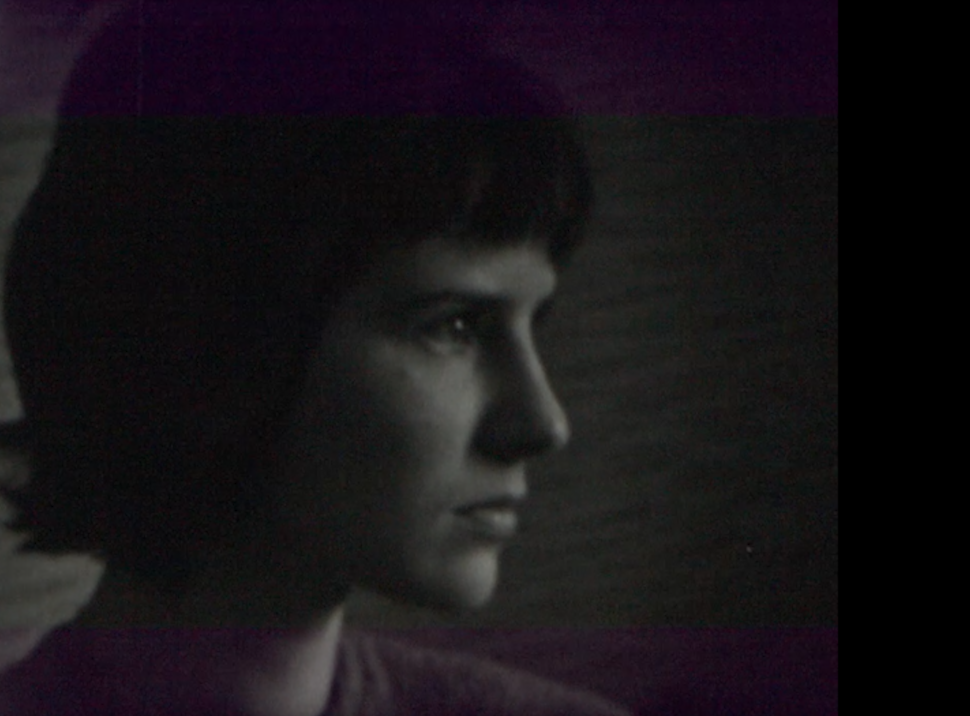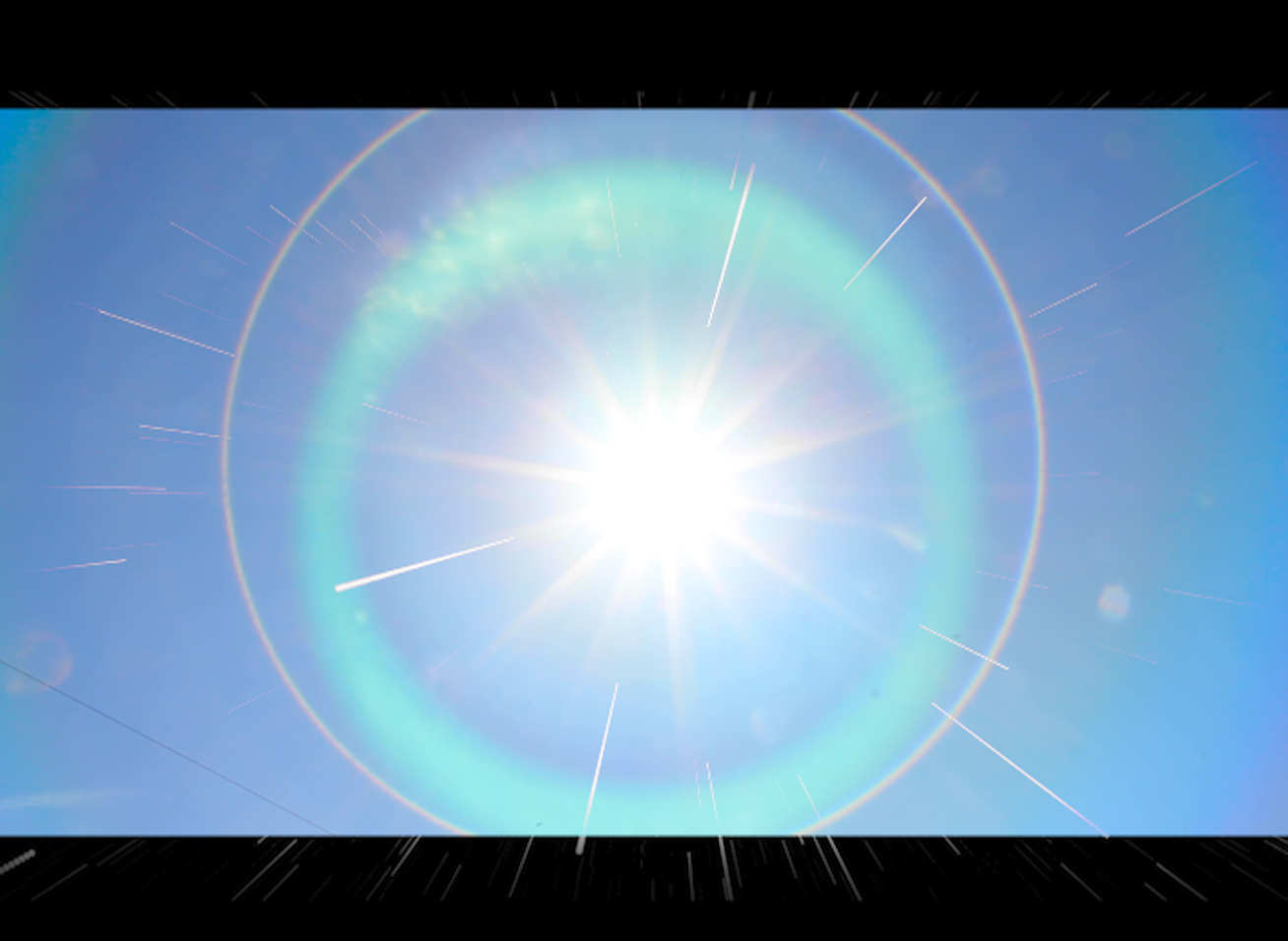Too Close to See
2021 /
video 7.38 min
sound 5.1
video 7.38 min
sound 5.1
The project highly questions the emergence and re-enforcement of modernist distinctions between public and private spaces and inherent body politics. Focusing on questions of hybridity and blind spots the project aims to reflect those dichotomies and re-establishment heteronormative modes of gender roles. The installation will try to outline zones of vulnerability within the spectrum of feminist discourses.
The film material from the Amaterinen* project (archive of Film Museum Vienna), which I researched, included lots of shots, depicting the filmmakers with their cameras.
The camera was not only a tool of production but also a tool of emancipation and representation, allowing women to cross the lines of privacy and turn private spaces into a political agenda. That's why I selected mainly those parts that perform the translation of distinct territories into hybrid, semi-public semi-private spaces. I tried to montage a dialogue between the found footage and our presence, as well as trying to reflect the meaning of the camera, from a specialist tool to everyday and permanently available elements. I also tried to reflect on the early moments of emancipation and the actual politics of surveillance, again defining the public and private space as a territory of control.
I highlighted one of the critical views on technology, outlining how the growing possibility of digital systems questions the ethical questions of bodily presence, safety, privacy, and measurements of borders.
Accordingly, those distinct spaces have (historically) generated particular and expected sets of behaviour and body politics - segregating individual habits and forms of living at home from the representational articulations of the body in the public domain. No need to say that the "private" domain is in itself a product of a public and ideologically framed assignment (reflected in the echoes of "private is the political"). The project investigates those heteronormative distinctions and looks for the blind spots in between, for the models of behaviour beyond the public-private dialectics, maybe even questions the adequacy of these concepts.
Credits:
Archive material from:
Familie Vavriceck, Elfriede Irrall, Sieglinde Kurzy
Concept / Camera / Sound / Post-Production: Kristina Cyan
Voice: Rosie Benn
Special thanks to:
Film Museum Vienna, Constanze Ruhm and Digitale Media Art class, Rosie Benn, Akademie der bildenden Künste
The film material from the Amaterinen* project (archive of Film Museum Vienna), which I researched, included lots of shots, depicting the filmmakers with their cameras.
The camera was not only a tool of production but also a tool of emancipation and representation, allowing women to cross the lines of privacy and turn private spaces into a political agenda. That's why I selected mainly those parts that perform the translation of distinct territories into hybrid, semi-public semi-private spaces. I tried to montage a dialogue between the found footage and our presence, as well as trying to reflect the meaning of the camera, from a specialist tool to everyday and permanently available elements. I also tried to reflect on the early moments of emancipation and the actual politics of surveillance, again defining the public and private space as a territory of control.
I highlighted one of the critical views on technology, outlining how the growing possibility of digital systems questions the ethical questions of bodily presence, safety, privacy, and measurements of borders.
Accordingly, those distinct spaces have (historically) generated particular and expected sets of behaviour and body politics - segregating individual habits and forms of living at home from the representational articulations of the body in the public domain. No need to say that the "private" domain is in itself a product of a public and ideologically framed assignment (reflected in the echoes of "private is the political"). The project investigates those heteronormative distinctions and looks for the blind spots in between, for the models of behaviour beyond the public-private dialectics, maybe even questions the adequacy of these concepts.
Exhibitions and Screenings:
2021 Screening, Film Museum Vienna (AT)
2022 Media art festival Osnabrück, (DE)
2022 B3 Bienalle moving images Frankfurt, (DE)
2022 Das Weisse Hous Vienna (AT)
2022 Rec Festival, Nice (FR)
2021 Screening, Film Museum Vienna (AT)
2022 Media art festival Osnabrück, (DE)
2022 B3 Bienalle moving images Frankfurt, (DE)
2022 Das Weisse Hous Vienna (AT)
2022 Rec Festival, Nice (FR)
Credits:
Archive material from:
Familie Vavriceck, Elfriede Irrall, Sieglinde Kurzy
Concept / Camera / Sound / Post-Production: Kristina Cyan
Voice: Rosie Benn
Special thanks to:
Film Museum Vienna, Constanze Ruhm and Digitale Media Art class, Rosie Benn, Akademie der bildenden Künste





